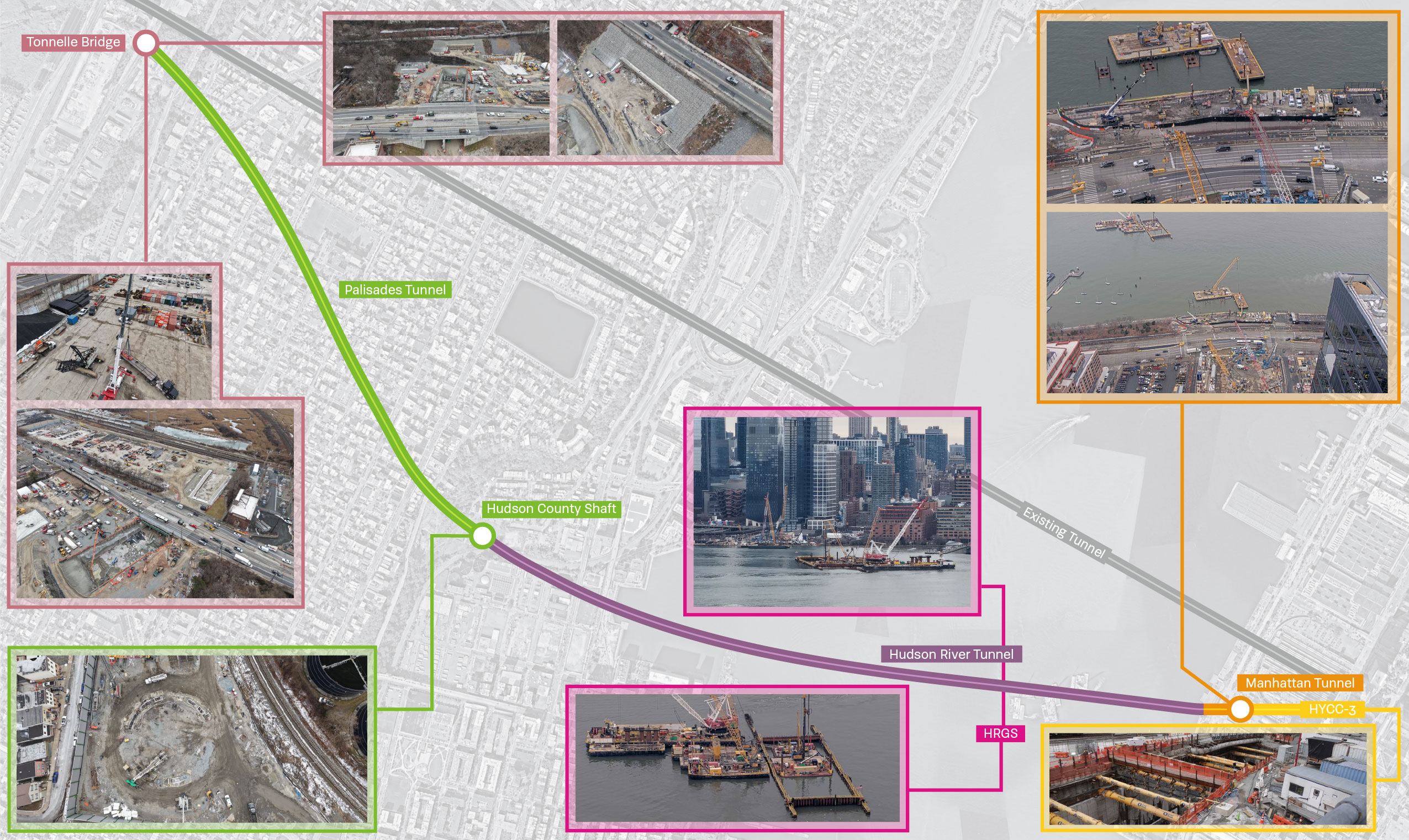Delivering the Most Urgent Infrastructure Project in America
The Gateway Development Commission is building the Hudson Tunnel Project, an urgent investment in the nation’s passenger rail infrastructure that will improve transportation up and down the East Coast, create hundreds of thousands of jobs, and strengthen the national economy for decades to come.
The Hudson Tunnel Project will make two crucial improvements to the national rail network:
- Building nine miles of new passenger rail track between New York and New Jersey, including nearly five miles of tunnel boring to construct a new, two-tube tunnel under the Hudson River.
- Rehabilitating the North River Tunnel, which has been in service since 1910 and is a source of chronic delays for hundreds of thousands of daily passengers.
The Hudson Tunnel Project is the cornerstone of the Gateway Program, a comprehensive rail investment program that will modernize rail travel and create new capacity for the most congested section of the Northeast Corridor.
Creating Jobs and Growing the Economy
Building the Hudson Tunnel Project is creating tens of thousands of good jobs and generating nearly $20 billion in economic activity. Just as important, it is preventing a tunnel shutdown that could cost our economy $16 billion.
95,000 Jobs
Total jobs created during construction of the Hudson Tunnel Project.
$19.6 Billion
Economic activity generated by construction.
$87 Million
Goods and services purchased from businesses each month, on average. GDC prioritizes buying from American businesses.
200,000 Passengers
Passengers who will benefit from reliable, on-time rides every day.
Active Construction in New Jersey and New York
The Hudson Tunnel Project consists of ten distinct construction projects. Five of these projects are in progress. This construction is supporting more than 20,000 jobs.
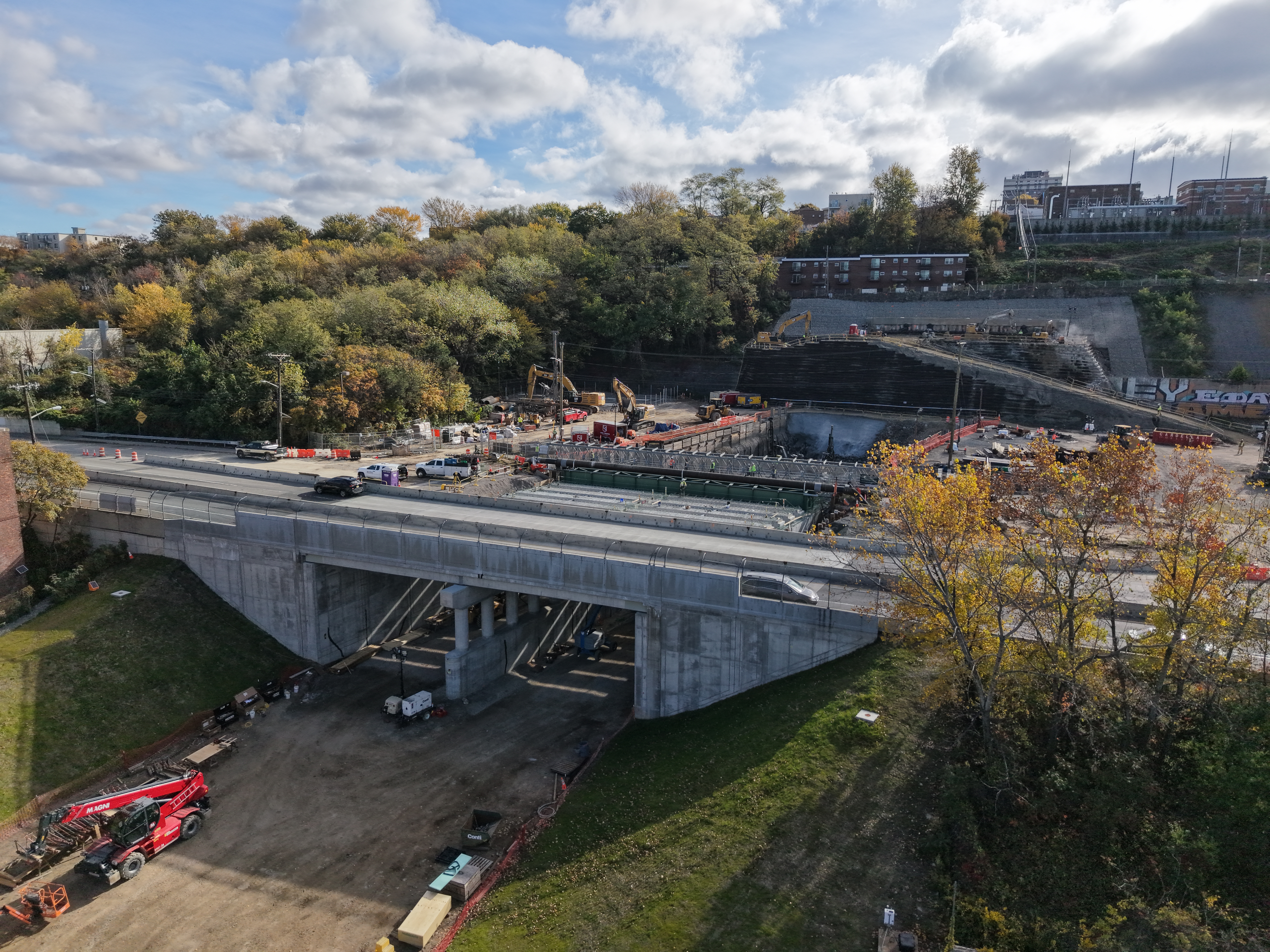
Tonnelle Avenue Bridge and Utility Relocation Project
Purpose: Build a new roadway bridge to create the access point for the tunnel boring machines that will build the New Jersey section of the new tunnel and a pathway for the tracks that will take trains into and out of the tunnel once it is in service.
Jobs: 400 | Location: North Bergen, NJ
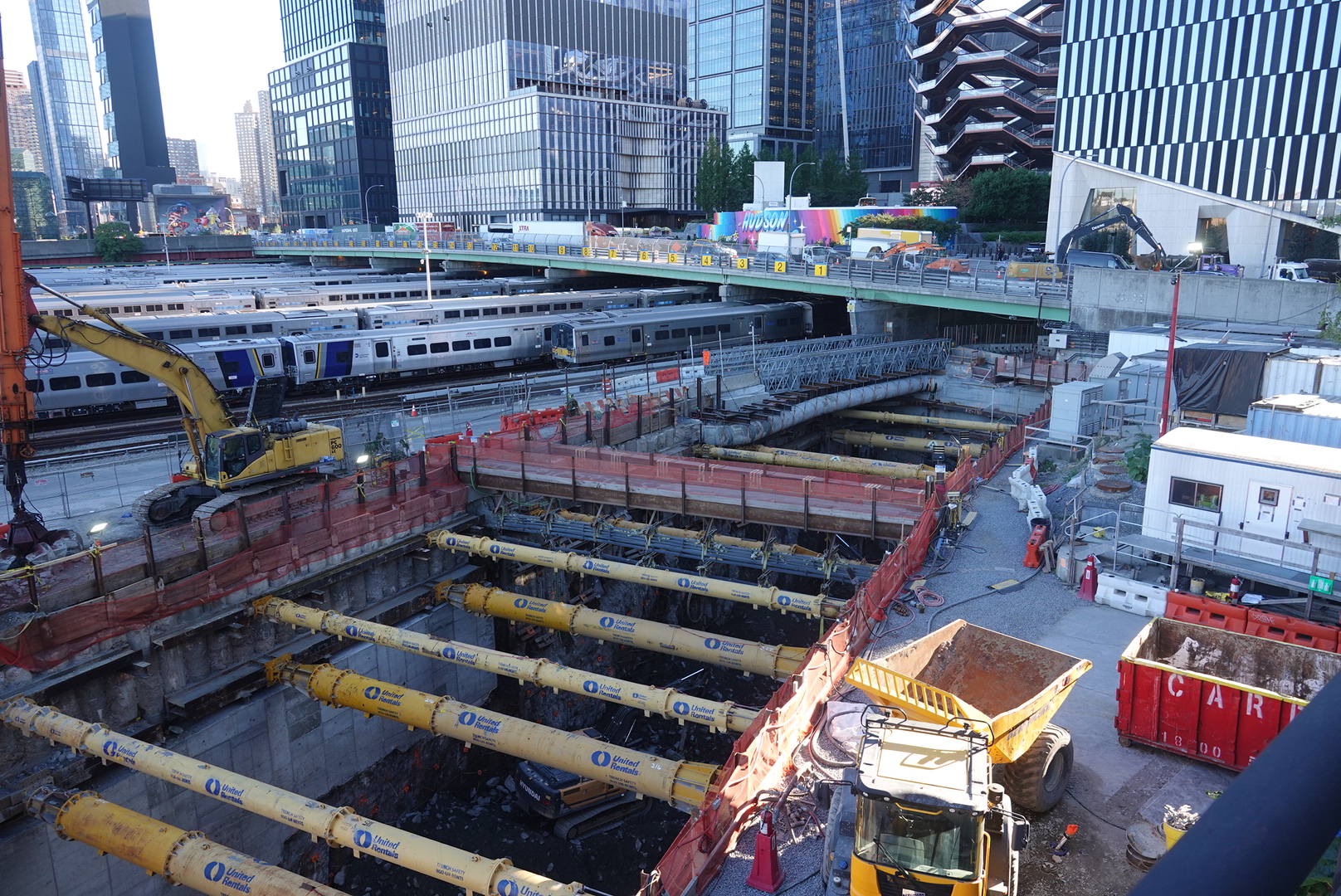
Hudson Yards Concrete Casing – Section 3 Project
Purpose: Build the last segment of the rail right-of-way under Hudson Yards to connect the new tunnel to New York Penn Station.
Jobs: 4,800 | Location: New York, NY
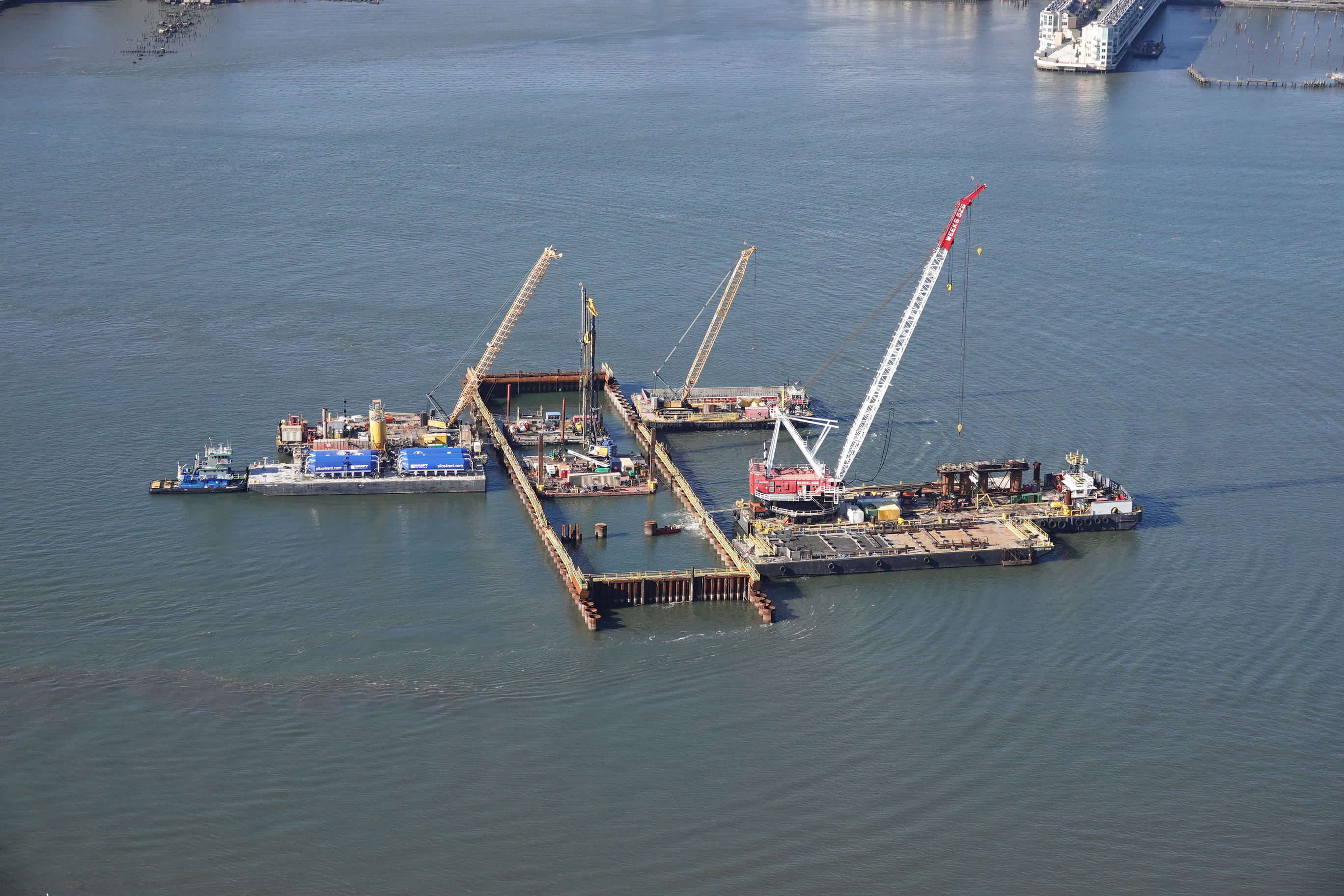
Hudson River Ground Stabilization Project
Purpose: Stabilize the riverbed and remove obstructions in preparation for tunnel boring beneath the Hudson River.
Jobs: 2,300 | Location: New York, NY
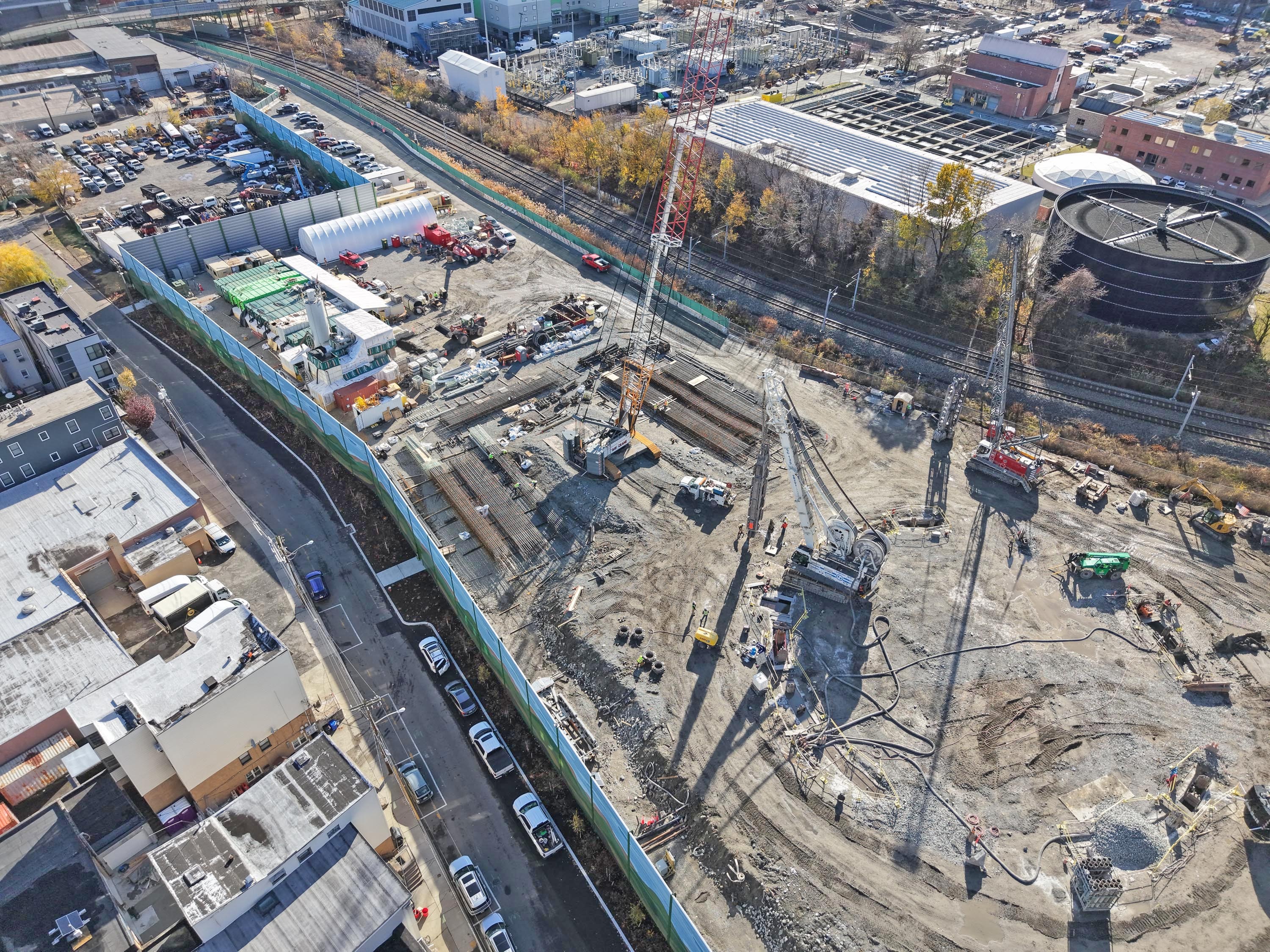
Palisades Tunnel Project
Purpose: Construct the first mile of the new tunnel in New Jersey and build the Hudson County Access Shaft. This is the first construction project that involves tunnel boring.
Jobs: 5,500 | Location: Hudson County, N
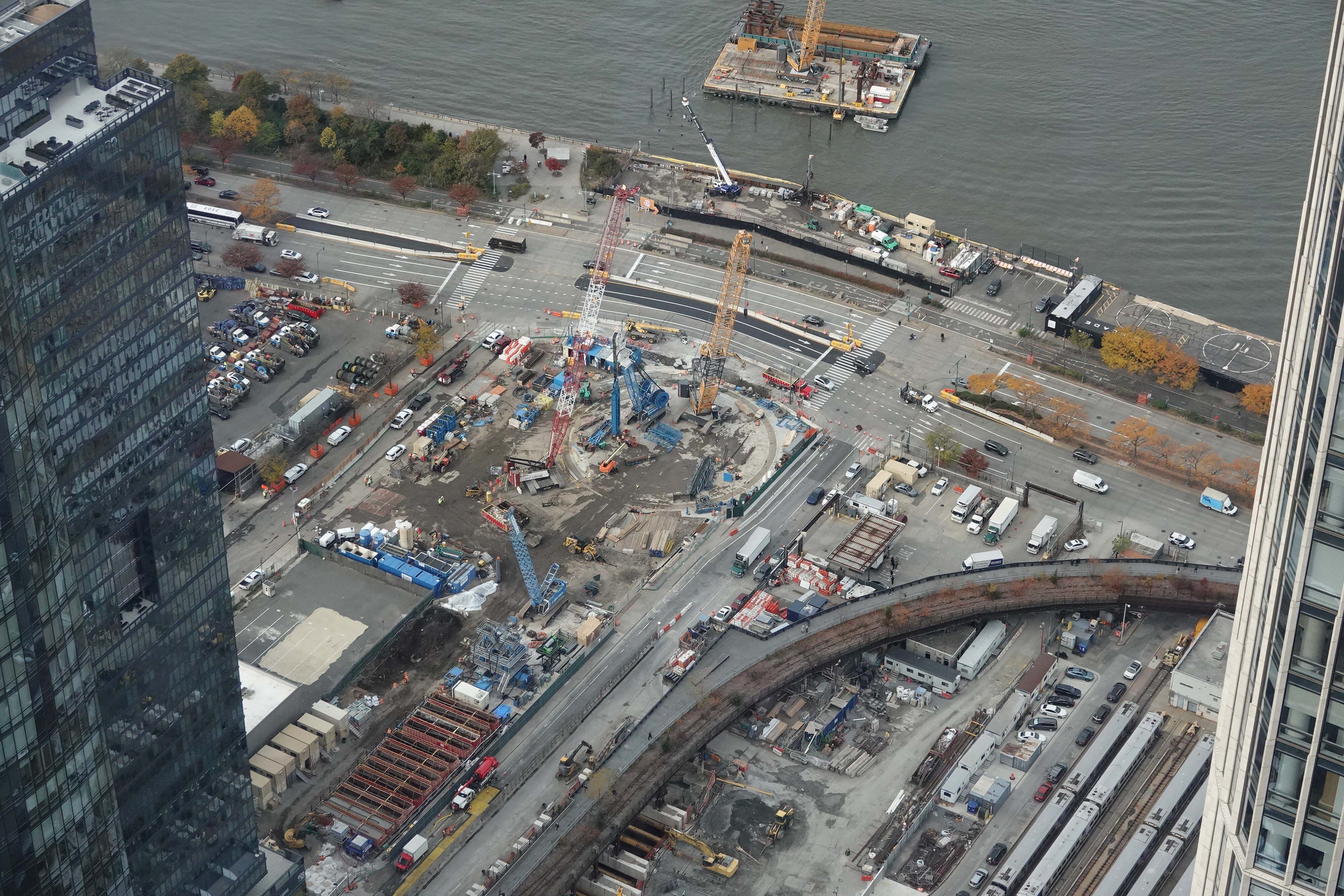
Manhattan Tunnel Project
Purpose: Build the portion of tunnel that from the Manhattan Bulkhead to the Hudson Yards Concrete Casing and prepare the ground under Manhattan’s West Side for tunnel boring.
Jobs: 7,200 | Location: New York, NY
See Our Progress
We have cameras at each active construction site to document our progress. Click and drag the photo to look around, and scroll to zoom in. You can also use the arrows below the picture to see older photos.
You can see more photos from our construction sites in our Photo Gallery, and video footage of construction in our Video Gallery.
Tonnelle Ave. Project & Palisades Tunnel Portal Construction Cam
Hudson County Access Shaft Construction Cam (Part of the Palisades Tunnel Project)
HYCC-3 Construction Cam
Hudson River Ground Stabilization Construction Cam
Manhattan Tunnel Construction Cam
About the Gateway Program
The Gateway Program is an essential investment in the country’s rail infrastructure that will fortify rail transportation along a 10-mile stretch of the Northeast Corridor between Newark, New Jersey and New York Penn Station in New York City that handles more than 200,000 passenger trips every day.
The Northeast Corridor is a vital artery in the region and a critical element of the national transportation network, linking millions of people to good jobs and connecting this region with the rest of the country. It is the most heavily used passenger rail line in the U.S., serving a region that produces 20 percent of the nation’s GDP.
Quick Links
General Inquiries: info@gatewayprogram.org
Questions About Construction Projects: ManhattanConstruction@gatewayprogram.org or
NJConstruction@gatewayprogram.org

